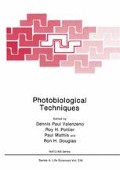Abstract
In our waking hours, we are continually being subjected to a vast amount of information that needs to be analyzed and interpreted by the visual system. If we consider the simplest case of viewing a single object against a uniform background, we need to know, among other things, the brightness and color of both object and background, the object’s speed and direction of movement, its distance and its size. If more than one object is involved, as is usually the case, one not only needs to know these parameters for each object, but also how they relate to one another. The interface between this complex visual environment and our nervous system is the retina; a thin translucent layer of nerve cells lining the posterior half of the eye. The optic media, primarily the cornea and, to a lesser extent, the lens, produce an inverted optical image of the world on our retina. As described in the previous chapter, the photons that make up this image are then absorbed by the visual pigment and converted into a series of electrical events in the photoreceptors through the processes of transduction. These electrical signals are then processed by the remainder of the visual system to extract all the relevant stimulus parameters. Although much of this processing occurs within the brain, a surprising amount is carried out within the retina itself. This is especially true for lower vertebrates such as amphibia and fish.
Access this chapter
Tax calculation will be finalised at checkout
Purchases are for personal use only
Preview
Unable to display preview. Download preview PDF.
Supplementary Reading
References
Armington, J.C. (1974) The Electroretinogram. Academic Press, New York.
Barlow, H.B. (1972) Dark and light adaptation: psychophysics. In Handbook of Sensory Physiology VII/4 (Edited by D. Jameson and L.M. Hurvich ). Springer Verlag, Berlin.
Bowmaker, J.K. (1977) Long-lived photoproducts of the green-rod pigment of the frog, Rana temporaria.
Vision Res. 17,17–23.
Bowmaker, J.K. (1984) Microspectrophotometry of vertebrate photoreceptors. Vision Res. 24, 1641–1650.
Bowmaker, J.K. and E.R. Loew (1976) The action of hydroxylamine on visual pigments in the intact retina of the frog (Rana temporaria). Vision Res. 16, 811–818.
Dartnall, H.J. (1957) The Visual Pigments. Methuen, London.
Denton, E.J. and J.H. Wyllie (1955) Study of photosensitive pigments in the pink and green rods of the frog. J.Physiol. 127, 81–89.
Donner, K.O. and Τ. Reuter (1962) The spectral sensitivity and photopigment of the green rods in the frog’s retina. Vision Res. 2, 357–372.
Dowling, J.E. (1987) The Retina: An Approachable Part of the Brain. Belknap Press, Cambridge, Mass.
Granit, R. (1955) Receptors and Sensory Perception. Yale University Press, New Haven.
Harosi, F.I. (1982) Recent results from single cell microspectrophotometry: cone pigments in frog, fish and monkey. Colour Res. Applic. 7, 135–141.
Liebman, P.A. (1972) Microspectrophotometry of photoreceptors. In Handbook of Sensory Physiology VII/1 (Edited by H.J.A. Dartnall ). Springer Verlag, Berlin.
Liebman, P.A. and G. Entine (1968) Visual pigments of frog and tadpole (Rana pipiens). J. Exp. Biol. 40, 371– 379.
Muntz, W.R.A. (1966) Visual pigments and spectral sensitivity in Rana temporaria and other European tadpoles. Vision Res. 6, 601–618.
Muntz, W.R. A. (1977) The visual world of amphibia. In Handbook of Sensory Physiology, VII/5 (Edited by F. Crescitelli ). Springer Verlag, Berlin.
Rushton, W.A.H. (1959) Visual pigments in man and animals and their relation to seeing. Prog. Biophys. Chem. 9, 239–283.
Semple-Rowland, S.L. and E.B. Goldstein (1981) Segregation of Vitamin A1 and Vitamin A2 cone pigments in the bullfrog retina. Vision Res. 21, 825–828.
Walraven, J., C. Enroth-Cugell, D.I. Hood, A. MacLeod and J.L. Schnapf (1989) The control of visual sensitivity: receptoral and postreceptoral processes. In Visual Perception: The Neurophysiological Foundations (Edited by L. Spillman and J.S. Werner ). Academic Press, San Diego.
Author information
Authors and Affiliations
Editor information
Editors and Affiliations
Rights and permissions
Copyright information
© 1991 Springer Science+Business Media New York
About this chapter
Cite this chapter
Douglas, R. (1991). Measurement of Retinal Function Using the Electroretinogram. In: Valenzeno, D.P., Pottier, R.H., Mathis, P., Douglas, R.H. (eds) Photobiological Techniques. NATO ASI Series, vol 216. Springer, Boston, MA. https://doi.org/10.1007/978-1-4615-3840-0_15
Download citation
DOI: https://doi.org/10.1007/978-1-4615-3840-0_15
Publisher Name: Springer, Boston, MA
Print ISBN: 978-0-306-43778-6
Online ISBN: 978-1-4615-3840-0
eBook Packages: Springer Book Archive

